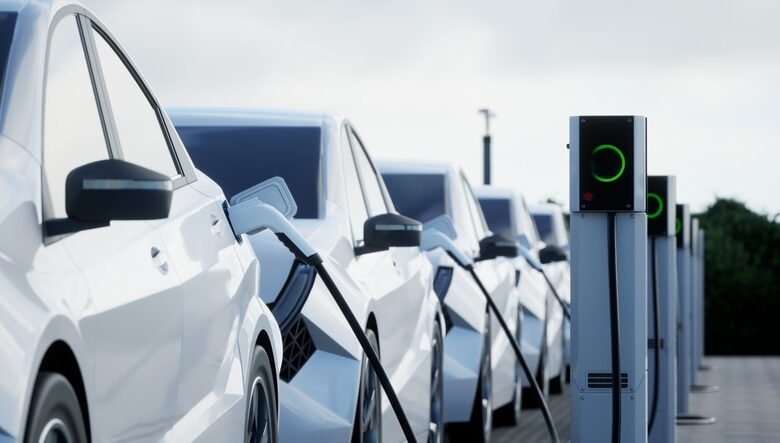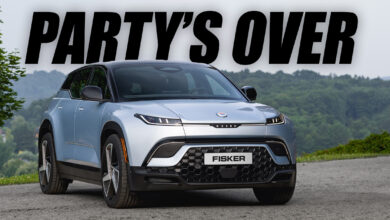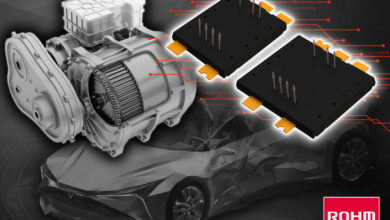Why are EV sales slowing?

Sales momentum for electric vehicles (EVs) is slowing globally, and hybrids (HEVs) and plug-in hybrids (PHEVs) are proving more competitive than first thought.
As sales flag, Goldman Sachs Research analyst Kota Yuzawa says the team’s bear case for EV sales is becoming more likely. At the same time, he sees investment opportunities in automakers with strong balance sheets and lineups with multiple powertrains. The team also expects demand for EVs to gradually grow amid the pursuit of carbon neutrality.
We spoke with Kota for his views on where the global EV market is headed.
What are the headwinds for the EV market?
We believe there are three main factors blunting EV penetration. For one, we’re seeing rising concerns around EV capital costs due to lower prices being realized for used EVs. In the UK, for example, EV used car prices have fallen sharply in recent months. Two, uncertainty around a number of elections this year has decreased visibility on potential changes to government policies affecting the EV industry.
The third and final concern is around a shortage of rapid-charging stations. As EV penetration accelerates, rapid charging station infrastructure issues have emerged as a tangible problem. Several automakers have said that concerns about driving range and charging infrastructure are increasing. These issues may lead consumers to have second thoughts about buying an EV.
How has the EV slowdown impacted your forecasts?
We think our bear scenario calling for a year-over-year decline in EV sales volume in 2024 has become more realistic given the three negative factors outlined above. We previously suggested that EV penetration could vary considerably under various conditions. Despite the current slowdown in EVs, our base-case scenario still calls for EV sales volume to rise 21% year-over-year in 2024. But under our bear-case scenario, we see EV sales volume declining 2% year-over-year, and negative growth would likely result in oversupply across the EV supply chain.
What’s going on with hybrid sales?
Sales of HEVs and PHEVs have been accelerating amid the slowdown in EVs. In the US, growth has outpaced EVs over the past several months. As a result, we believe global HEV sales could exceed the outlook by 1 to 2 million vehicles. While HEVs are viewed as transitional technology, we look for increasing focus on them to help reduce CO2 while maximizing earnings and supporting investment in EVs for automakers.
HEVs have a significant advantage in payback period compared to EVs. We estimate the payback period for HEVs at just over three years, assuming annual fuel savings. In addition, given that the first HEVs were introduced back in 1997, we believe there is high confidence in used car prices for HEVs.
But we also believe HEVs may not be chosen solely because of their economic rationality. In fact, hybrids have shown higher horsepower performance than gasoline-engine vehicles. Motor assistance when accelerating is likely to provide reassurance to drivers when, for example, they need to merge into fast-moving traffic on highways. Amid the downsizing of gasoline engines, we think HEV performance could garner greater attention. But if lower EV costs are realized by 2030, we believe the advantages of EVs will again come under focus.
How is China impacting the global EV market?
With excess production capacity currently at more than 5 million vehicles, China aims both to expand domestic EV uptake and export EVs to overseas markets. China enjoys cost advantages given its concentrated EV supply chain (including for batteries), and we think it is also the most competitive in lithium iron phosphate batteries.
Many government policies in the US, Europe, and India seek to block Chinese and other foreign EVs from gaining a foothold in their EV supply chains, to the degree possible. Given that EV demand outside China is not very large apart from these three regions, we think it’s unlikely that China’s supply surplus will be eliminated easily. As Chinese EV makers face a challenging overall landscape when it comes to exports, it is becoming more important to keep a closer eye on winners and losers among them.
Chinese EV makers do pose a major threat to Japanese brands, which have maintained high market share in Southeast Asia for many years. The Southeast Asia market has been a major export destination for Chinese EVs since 2023.
What does all this mean for investors? What types of companies should they seek?
Now is the time for upfront investment in vertical integration. As we expect demand will eventually shift to EVs in pursuit of achieving carbon neutrality, we believe it will be important for automakers to move decisively over the next few years to accumulate core EV technologies (batteries, power semiconductors, motors, etc.). We also think balance sheet strength and the ability to generate free cash flow from existing businesses will be crucial in supporting this ongoing investment. We are bullish on automakers with strong balance sheets and lineups with multiple powertrains, such as HEVs.
This article is being provided for educational purposes only. The information contained in this article does not constitute a recommendation from any Goldman Sachs entity to the recipient, and Goldman Sachs is not providing any financial, economic, legal, investment, accounting, or tax advice through this article or to its recipient. Neither Goldman Sachs nor any of its affiliates makes any representation or warranty, express or implied, as to the accuracy or completeness of the statements or any information contained in this article and any liability therefore (including in respect of direct, indirect, or consequential loss or damage) is expressly disclaimed.



